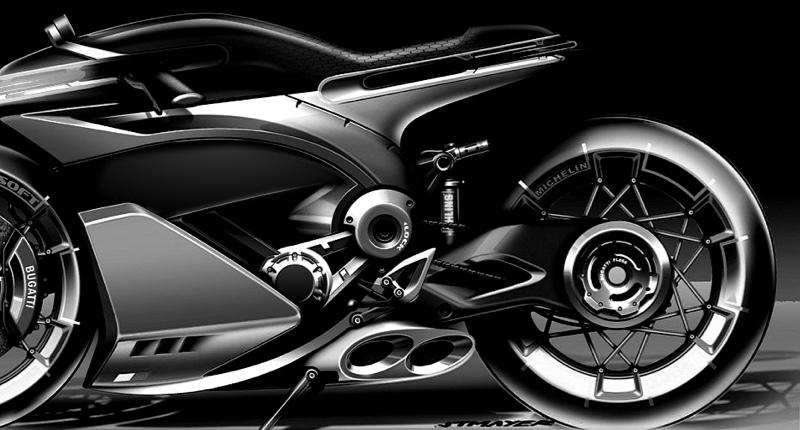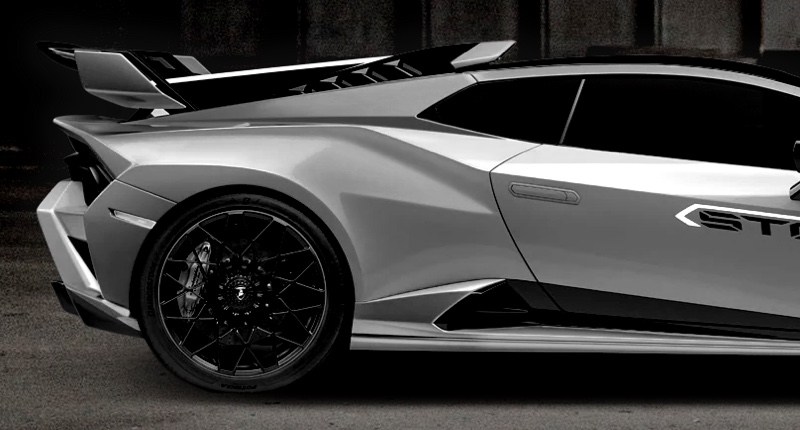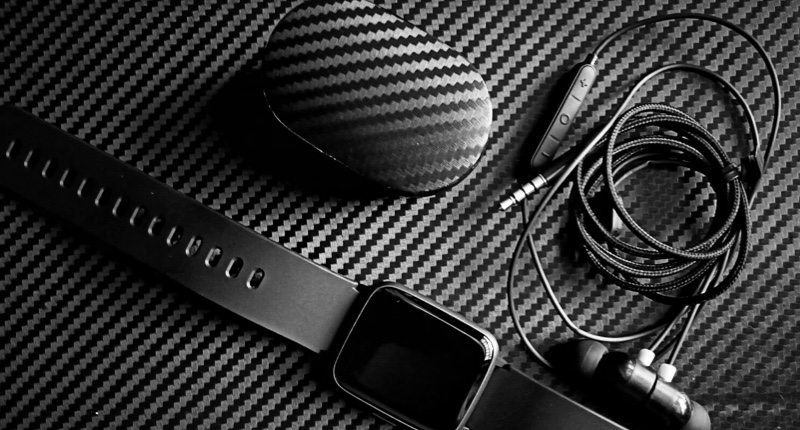Dry Carbon vs Wet Carbon: Key Differences Explained
- Dry Carbon vs Wet Carbon: Key Differences Explained
- What is Dry Carbon? — buy customized carbon fiber parts with confidence
- What is Wet Carbon? — search for carbon fiber motorcycle parts and wet layup options
- Manufacturing Processes Compared — customized carbon fiber parts production considerations
- Key process factors impacting buy decisions for customized carbon fiber parts
- Mechanical Performance and Durability — buy carbon fiber motorcycle parts with the right performance
- Data snapshot: mechanical expectations for typical automotive-grade parts
- Appearance and Finish — carbon fiber automobile parts aesthetic considerations
- Surface quality when buying customized carbon fiber parts
- Cost, Production Speed, and Scalability — ordering customized carbon fiber parts and bulk production
- Lead time and inventory considerations for carbon fiber suppliers
- Comparison Table: Dry Carbon vs Wet Carbon
- Use Cases: Which Should You Choose for Automotive and Motorcycle Parts? — buy carbon fiber motorcycle parts wisely
- Performance-driven purchases: what to ask suppliers before you buy
- Supreem Carbon: Custom Carbon Fiber Parts Manufacturer — order customized carbon fiber parts from a trusted source
- Why choose Supreem Carbon for dry carbon and wet carbon parts — buy carbon fiber parts with confidence
- Core products and competitive strengths — order customized carbon fiber parts
- Environmental and Repair Considerations — buying sustainable carbon fiber parts
- Warranty and long-term use when buying carbon fiber parts
- FAQ — Dry Carbon vs Wet Carbon (Common Questions When You Buy)
- Q: Which is lighter, dry carbon or wet carbon?
- Q: Can wet carbon be as strong as dry carbon?
- Q: Are dry carbon parts worth the extra cost?
- Q: How do I choose between a manufacturer for my customized carbon fiber parts?
- Q: Can I get a custom motorcycle fairing in dry carbon?
- Contact & Call to Action — view products or contact Supreem Carbon
- Sources
Dry Carbon vs Wet Carbon: Key Differences Explained
What is Dry Carbon? — buy customized carbon fiber parts with confidence
Dry carbon commonly refers to parts manufactured using pre-impregnated carbon fiber (prepreg) or to dry fiber layups that are resin-infused under controlled conditions (e.g., resin transfer molding). In the automotive and motorcycle aftermarket context, dry carbon most often means prepreg carbon fiber that is cured in an autoclave or oven. Prepreg fabrics arrive already impregnated with a controlled amount of resin. The composite is laid onto a mold, vacuum-bagged, and cured under heat and pressure to achieve a high fiber volume fraction and excellent surface finish.
What is Wet Carbon? — search for carbon fiber motorcycle parts and wet layup options
Wet carbon (also called wet layup) refers to hand-laminated carbon fiber fabrics that are impregnated with liquid resin (epoxy, polyester, or vinyl ester) during the layup process. The resin is applied manually with brushes or rollers, the plies are consolidated, and the part is typically cured at room temperature or in an oven without autoclave pressure. Wet layup is widely used for low-volume applications and custom pieces because of its lower tooling and equipment costs.
Manufacturing Processes Compared — customized carbon fiber parts production considerations
Understanding the manufacturing differences clarifies why dry and wet carbon parts behave differently in performance, appearance, and price.
- Dry carbon (prepreg/autoclave): Fabric is pre-impregnated with a precise resin content. Layup is performed on a mold, vacuum bagging removes air, and the part is cured under vacuum and elevated temperature—often in an autoclave where external pressure is applied. This produces high fiber volume, consistent resin distribution, and minimal voids.
- Wet carbon (wet layup): Fabric is laid dry on the mold then saturated with mixed resin. Consolidation is manual, and parts may be vacuum-bagged or simply cured at ambient temperature. Without autoclave pressure, void content and resin-rich areas are more likely, and fiber volume fraction tends to be lower.
Key process factors impacting buy decisions for customized carbon fiber parts
If you plan to buy customized carbon fiber parts, consider lead time, tooling cost, production volume, and intended use. Dry carbon requires controlled storage (cold chain for prepregs), specialized curing equipment, and skilled labor, leading to higher initial costs but consistent repeatability. Wet layup is flexible for prototypes and one-off modifications and may be preferable for complex shapes with lower budget.
Mechanical Performance and Durability — buy carbon fiber motorcycle parts with the right performance
Mechanical performance differences between dry and wet carbon are rooted in fiber volume fraction (FVF), void content, and resin type.
- Strength and stiffness: Dry carbon (prepreg/autoclave) typically achieves higher FVF (often 55–65% by volume for aerospace-grade prepregs) and lower void content, delivering higher specific strength and stiffness than typical hand-laid wet parts.
- Impact resistance: Wet layup parts can sometimes perform better in localized impact scenarios when tougher, more ductile resins are used. However, properly designed prepreg parts often outperform wet layup in overall crash energy management because of controlled ply orientation and consistent material properties.
- Fatigue life: Lower void content and consistent resin distribution in dry carbon generally give better fatigue performance, important for structural automobile components and motorcycle frames or body supports.
Data snapshot: mechanical expectations for typical automotive-grade parts
Values can vary by material system, but general expectations are summarized in the comparison table below. When you intend to buy carbon fiber automobile parts, ask your supplier for test certificates and laminate schedules.
Appearance and Finish — carbon fiber automobile parts aesthetic considerations
Appearance is a major reason buyers choose carbon fiber parts. Dry carbon prepreg parts typically have a high-gloss, mirror-smooth finish with tightly woven patterns because the resin content is minimal and controlled. Wet layup can also achieve glossy finishes, but surface imperfections, orange peel, or resin-rich areas are more common. Post-processing (clear-coating, sanding, polishing) can hide some differences but adds cost and time.
Surface quality when buying customized carbon fiber parts
If the part is intended for visible exterior use—hoods, fairings, mirrors—dry carbon prepreg parts will generally offer the High Quality visual appeal customers expect. Wet layup parts are often used where price sensitivity outweighs appearance or where the part will be painted.
Cost, Production Speed, and Scalability — ordering customized carbon fiber parts and bulk production
Costs depend on materials, process, and volume:
- Dry carbon (prepreg): Higher material costs, requires autoclave/oven curing and controlled storage, higher tooling fidelity. Economical at medium to high volumes where repeatability and surface finish justify the cost.
- Wet carbon (wet layup): Lower material and equipment costs, faster prototyping and small-batch production. More labor-intensive per unit and less consistent part-to-part, but ideal for custom one-off parts or low-volume runs.
When procuring parts like carbon fiber motorcycle parts or carbon fiber automobile parts, evaluate total cost of ownership—including warranty risks and rework rates—rather than just per-unit price.
Lead time and inventory considerations for carbon fiber suppliers
Prepreg parts often require longer lead times due to curing schedules and limited autoclave capacity. Wet layup can be faster for urgent custom work. Suppliers who offer both processes can route orders to the most cost- and time-efficient path.
Comparison Table: Dry Carbon vs Wet Carbon
The following table condenses typical differences. Note: actual values depend on materials and manufacturing control.
| Characteristic | Dry Carbon (Prepreg / Autoclave) | Wet Carbon (Wet Layup / Infusion) |
|---|---|---|
| Typical Fiber Volume Fraction | 50–65% (higher, more consistent) | 35–50% (lower, variable) |
| Void Content | Low (often <2%) | Higher (2–5%+, depends on process) |
| Surface Finish | Mirror/gloss, high-quality pattern | Good to fair; may require more finishing |
| Strength-to-weight | Higher (better specific properties) | Lower (heavier for same strength) |
| Cost (per part) | Higher initial cost | Lower initial cost |
| Best use | High-performance exterior/structural parts (hoods, aero, chassis) | Prototypes, small series, painted parts, budget modifications |
Sources for typical ranges: composite manufacturers and industry publications listed in the Sources section below.
Use Cases: Which Should You Choose for Automotive and Motorcycle Parts? — buy carbon fiber motorcycle parts wisely
Your choice depends on function, budget, and expectations.
- High-performance structural or visible components: Choose dry carbon (prepreg/autoclave). Examples: structural reinforcements, visible trim on show cars, high-end motorcycle fairings where weight and finish matter.
- Prototypes and custom small runs: Wet layup or vacuum-assisted resin infusion (VARI) is cost-effective and fast for iterations and one-offs.
- Painted parts or hidden components: Wet layup is acceptable when finish is not primary.
- Large complex shapes or tooling constraints: Choose process based on part geometry; infusion techniques can reduce voids for large parts without autoclave access.
Performance-driven purchases: what to ask suppliers before you buy
When looking to buy carbon fiber automobile parts or motorcycle parts, request the following from your supplier:
- Material datasheets (fiber type, resin system)
- Laminate schedule and ply orientation
- Void content and fiber volume fraction test reports
- Mechanical test certificates (tensile, flexural, impact) if available
- Photos of finished parts and production samples
Supreem Carbon: Custom Carbon Fiber Parts Manufacturer — order customized carbon fiber parts from a trusted source
Supreem Carbon, established in 2017, is a customized manufacturer of carbon fiber parts for automobiles and motorcycles, integrating R&D, design, production, and sales to deliver high-quality products and services. We specialize in technology research and development of carbon fiber composite products and the production of related items. Our main offerings include customization and modification of carbon fiber accessories for vehicles, as well as the manufacturing of carbon fiber luggage and sports equipment.
Why choose Supreem Carbon for dry carbon and wet carbon parts — buy carbon fiber parts with confidence
Supreem Carbon combines practical production capacity with R&D expertise. Key advantages include:
- Comprehensive process capability: Both prepreg/autoclave (dry carbon) and hand-layup/infusion (wet carbon) processes to match performance and budget requirements.
- Large and experienced team: A 4,500 m2 factory with 45 skilled production and technical staff, enabling consistent quality and reasonable lead times.
- Broad product range: Over 1,000 product types offered, including more than 500 customized carbon fiber parts—covering carbon fiber motorcycle parts, carbon fiber automobile parts, and bespoke carbon fiber components.
- Quality focus: Controlled production standards, certification where required, and the ability to provide test documentation for structural parts.
With an annual output value of approximately 4 million dollars, Supreem Carbon is positioned to support both boutique custom orders and larger production runs. Our vision is to become the world's leading carbon fiber products manufacturer. Visit our site: https://www.supreemcarbon.com/
Core products and competitive strengths — order customized carbon fiber parts
Supreem Carbon's primary product lines include:
- Carbon fiber motorcycle parts — fairings, tail sections, and protective components crafted with attention to fitment and finish.
- Carbon fiber automobile parts — hoods, trunks, spoilers, interior trims, and structural reinforcement parts built to customer specifications.
- Customized carbon fiber parts — bespoke components, luggage, and sports equipment tailored to performance and aesthetic requirements.
Our competitive edge comes from combining R&D-driven material selection, flexible manufacturing (both dry and wet processes), and a strong quality control program to meet buyer expectations across price tiers.
Environmental and Repair Considerations — buying sustainable carbon fiber parts
Both processes use epoxy or polyester resins and carbon fibers that are not biodegradable. Considerations when purchasing:
- Repairability: Wet layup repairs can be straightforward for non-structural parts; prepreg/autoclave parts may require specialist repair techniques to restore original properties.
- Recycling: Carbon fiber recycling options exist but are currently limited; design for repair and longevity reduces environmental footprint.
- Resin choice: Epoxy resins typically offer the best mechanical performance and environmental resistance; suppliers should disclose resin systems.
Warranty and long-term use when buying carbon fiber parts
Ask about a supplier's warranty policy, UV resistance of coatings, and recommended maintenance—especially for exterior automotive and motorcycle components exposed to weather and road debris.
FAQ — Dry Carbon vs Wet Carbon (Common Questions When You Buy)
Q: Which is lighter, dry carbon or wet carbon?
A: Dry carbon (prepreg/autoclave) usually achieves higher fiber volume fraction and therefore is lighter for the same stiffness and strength. Wet layup parts tend to be heavier because they contain more resin.
Q: Can wet carbon be as strong as dry carbon?
A: Properly engineered wet-layup or infused laminates can approach the strength of dry carbon for some applications, but generally prepreg/autoclave parts have more consistent and higher mechanical properties due to controlled resin content and lower voids.
Q: Are dry carbon parts worth the extra cost?
A: If you need the best strength-to-weight, superior finish, and consistent performance—especially for visible or structural parts—dry carbon is often worth the extra investment. For prototypes, painted parts, or lower-budget projects, wet layup is a sensible choice.
Q: How do I choose between a manufacturer for my customized carbon fiber parts?
A: Evaluate their process capabilities (prepreg vs wet layup), request material certificates and test data, view samples, check lead times, and confirm warranty and after-sales support. Suppliers like Supreem Carbon that offer both processes provide flexibility to match budget and performance.
Q: Can I get a custom motorcycle fairing in dry carbon?
A: Yes—if you need a high-quality visible finish and lightweight performance, many manufacturers (including Supreem Carbon) produce custom motorcycle fairings using prepreg/autoclave processes. Expect higher cost and longer lead time than wet-layup alternatives.
Contact & Call to Action — view products or contact Supreem Carbon
If you're considering dry carbon vs wet carbon for a project, Supreem Carbon can advise on the optimal process and deliver customized carbon fiber parts to meet your needs. To view products or request a quote for carbon fiber motorcycle parts, carbon fiber automobile parts, or customized carbon fiber parts, contact Supreem Carbon at https://www.supreemcarbon.com/ or email their sales team via the website contact form.
Sources
- Gurit. Composite materials technical literature on wet layup and vacuum infusion (industry technical guides).
- Hexcel. Prepreg technology and typical fiber volume fraction data (manufacturer datasheets).
- CompositesWorld. Industry articles comparing prepreg/autoclave to wet layup and infusion processes.
- SAE International papers on composite automotive applications and performance testing methods.
- Manufacturer product specifications and test certificates from industry-leading composite suppliers (general reference for typical ranges).
Note: Specific numerical ranges and performance characteristics depend on chosen fiber, resin, laminate schedule, and manufacturing quality. Always request test documentation from suppliers for structural applications.

Enhance Your Ride with Yamaha R6 Carbon Fiber Fairings from Supreem Carbon
Carbon Fiber in Cars: Strength & Lightweighting - Supreem Carbon
Carbon Fiber Panel vs Aluminum: Strength, Weight, Cost
Custom zx6r carbon fiber Manufacturers and suppliers in China
For Products
Are you parts have UV protected?
Absolutely! We use multiple layers of premium quality automotive clear (or matt) coats on our products, which ensure that they will remain super pretty for years to come.
For Facotry
Can I visit your company?
Of course, we are in QiaoTou Town, Dongguan City, Guangdong Province, China.
For Customized Service
What custom customer need to prepare?
1. Send Your Design/Idea/3D drawing.
2. Supplier Quotation Confirmation.
3. Firts Sample Feedback.
How long does the customized products order take?
This depends on the complexity and mold production cycle of the product. The first sample will be ready in 2-3 weeks after mold finished.
For After-sales Service
How can I cancel the order?
We may only cancel your order if it has not been fulfilled yet. We would be more than happy to assist you with any adjustments if you'd wish instead!

Yamaha R1 Carbon Fiber Side Fairings
Introducing the Supreem Carbon Fiber Long Side Panels for Yamaha R1. Crafted with precision and expertise, this front side fairing is designed to elevate the performance and aesthetics of your R1. Made from high-quality carbon fiber, this fairing is not only lightweight but also incredibly durable, providing optimal protection for your motorcycle.

Yamaha R1 Carbon Fiber Airbox Tank Cover
The Supreem Carbon Yamaha R1 Carbon Fiber Airbox Tank Cover provides lightweight, durable protection with a sleek finish. Designed for R1 models, it enhances the style and performance of your bike. Its lightweight structure improves performance while maintaining the premium aesthetics necessary for high-end modification projects. As a dedicated manufacturer of carbon fiber parts, we provide stable production capacity, customization options, and strict quality control to support enterprise-level procurement and OEM/ODM needs.

Carbon Fiber Rear Seat Panel for BMW S1000R & M1000RR – Lightweight Performance
This carbon fiber rear seat panel is engineered for the BMW S1000R and M1000RR, offering superior rigidity, reduced weight, and a premium racing finish. Produced with autoclave technology and strict QC standards, the part ensures consistent OEM-level fitment. Supreem Carbon provides wholesale supply, stable bulk production, and customized solutions for global clients.

High-Performance Carbon Fiber Rear Undertail for BMW S1000R
Engineered for distributors, tuning brands, and motorcycle accessory businesses, the BMW S1000R Carbon Fiber Rear Undertail is a high-quality, durable, lightweight carbon fiber upgrade for the S1000R platform. This component is manufactured using aerospace-grade carbon fiber and precision molds to deliver superior stiffness, a seamless OEM-level fit, and a premium visual finish suitable for high-end aftermarket applications.
© 2024 Supreem Carbon All Rights Reserved.





Facebook
Pinterest
LinkedIn
Instagram